 Your new post is loading...
 Your new post is loading...
In June 2015, a new, hyperspecific website named Van Winkle’s went live. It was billed as an online destination for “all aspects of sleep and various nocturnal adventures” by its editorial director, Elizabeth Spiers, formerly an editor at Gawker and the Observer. In its first week, the site’s pieces included a listicle about dream sequence clichés and a 2,800-word feature on the rise of benzodiazepine prescriptions. Its editor-in-chief, Jeff Koyen, heralded it as “the first editorial venture of its kind.” What he meant by that had as much to do with its niche subject matter as it did its funding source: Van Winkle’s was not a traditionally independent journalistic venture, but the latest product of mattress startup Casper.
“We have a long-term vision for Casper to become the dedicated brand for all things sleep, and part of owning that category is owning the best content related to it,” Casper CEO Philip Krim told The Wall Street Journal at the time, speaking pure startup. He later added: “The mandate is to create awesome content and that’s it.”
Native Insider: Part of the challenge with "native" is that each organization has a different understanding of what it is. For the purposes of the research, what is your definition of native advertising?
Wu: In our study, we defined native advertising as sponsored content, which features content that is similar and consistent with publishers’ content and is often consumed by readers like non-sponsored content. I agree that there are also other types of native advertising, such as sponsored social media posts or sponsored hyperlinks. We focused on sponsored content because it is widely adopted by many news organizations, including very reputable ones like The New York Times.
Native Insider: Your research found that when content was identified as native advertising, readers expressed a lower opinion of the media outlet it was published in. However, the reputation of the company being promoted was not affected. Can you elaborate on this finding?
Wu: I think this was one of the most interesting findings in our study. We originally expected that both companies and media outlets would be negatively influenced. However, the media outlet was the only source that was affected. On one hand, this indicates that readers are not surprised by the sponsored content from a company, since similar covert marketing techniques have been utilized before, such as video news releases....
Native is one of the hottest topics in digital media, and advertisers and publishers are taking notice.
By creating advertisements that are in the same format as the content audiences are there to consume, marketers hope to provide a much less disruptive advertising experience. Native ads have also proven effective, drawing higher click rates than traditional banner ads, particularly on mobile devices.
New and exclusive data from BI Intelligence finds that spending on native ads will reach $7.9 billion this year and grow to $21 billion in 2018, rising from just $4.7 billion in 2013. We are the only research service that has provided a detailed breakdown of spend projections and growth rates for each of the three main native ad types — social-native, native-style display ads, and sponsored content. ...
On Sunday's Last Week Tonight With Jon Oliver, the network took their commentary on the separation of business and journalism up a notch and completely annihilated sponsored content. Needless to say, it was hilarious.
...Oliver started off his rant by noting that he was lucky to work for advertisement-free HBO, where he is free to say that “Old Navy makes you look like a tacky murderer.” After that, Oliver delivered 11 full minutes of pinpoint jokes about native ads. Few escaped the fire, with The New York Times‘ Meredith Levien, TIME Inc. CEO Joseph Ripp, and BuzzFeed co-founder Jonah Peretti on the receiving end of Last Week Tonight’s hottest burns....
Hill+Knowltons Group SJR doesnt make branded content. It makes publications that you might not even realize come from company marketing budgets.
Thanks to the Internet, anyone can now be a publisher.
Which is kind of like saying that anyone in a crowded football stadium could stand and deliver an eloquent speech. The hard part is not making noise. The hard part is getting people to listen. So by most aspiring publications’ definitions of success, a technology blog called the Txchnologist has made it. Last year, its articles were picked up about 200 times, including in Time, Smithsonian magazine, and on MSN News.
You may have seen its coverage of temporary tattoos that could make electric telekinesis possible. Or eyewear that could help people with red-green color blindness.
But what you may not have noticed, unless you read all the way to the bottom of an article or navigated to the blog’s homepage, is that the entire production comes out of GE’s marketing budget. It’s been created by a branch of PR firm Hill+Knowlton called Group SJR....
...Although companies understand the part about becoming a media company they missed something very important: media companies don’t create media about themselves. This is why companies have problems with the content they produce, people are immediately skeptical about any media that is about the company that produces it — no matter how high the quality.
Take a look at the Nielsen study released this week, commissioned by InPowered. It found that branded content ranked extremely low among consumers but content written by journalists — independent of any brand — ranked very highly....
Companies everywhere are building corporate news operations. We talked to some of the best to find out how they did it.
... If you’re the CEO or CMO of a mid-sized or large brand, you may have started thinking about building an in-house news operation of your own. To help you get there, we’ve created an ebook, The CMO’s Guide to Brand Journalism.
The book will help you structure a team and figure out what obstacles you should expect to encounter and how to get over them. We also explain the structure of a newsroom, and how to map that structure to a corporate environment.
Also provided is an explanation of four business models adopted by various companies. The four models are explained via case studies developed by interviewing journalists and executives at Microsoft, IBM, GE, Intel, Adobe, and other companies....
I’d like to offer a word of caution for those who may be over-excited about native advertising. Native advertising works for a couple of reasons; audiences aren’t used to embedded corporate content, and these media forms are somewhat deceptive, and don’t appear as sponsored.
Those two factors create a bubble that will surely burst once readers and viewers get tricked enough times.Just this past Monday a friend complained about a Buzzfeed article focusing on entertainment ideas that happneed to be sponsored by a potato chip company. The problem with the article its lack of disclosure, and every suggestion was followed by a push for X-brand chips....
The public relations industry is known for a lot of things: media relations, press conferences, event management, crisis communications, and, more recently, social media strategy and community management.
But there’s one thing that many communicators haven’t been particularly well-known for: creativity. At best, PR has been put in a box to amplify creative ideas developed by others. At worst, we’ve been accused of “spinning” stories or doing “stunts” to make a splash.
That’s changing. Over the last 18 months or so, branding, advertising and digital agencies’ dominance over creative campaigns has started to wane. Clients are increasingly turning to PR agencies to come up with the “big idea,” as the discipline is now in a good spot to call the shots on creative development. Here’s why.
In preparation for one of CMI’s upcoming reports, I’ve had the pleasure of meeting with a number of companies that are in what’s being called the “native advertising” space. Through this experience, I’ve come to the conclusion that, while the technique can potentially create significant value, native advertising is actually neither “native” nor “advertising.” It is simply one aspect of the larger discipline we know of as branded content marketing. Native by any other name According to Wikipedia (which I chose not because of, you know, Wikipedia, but because it seemed to be the only place offering one up), native advertising is defined as: “…a method in which the advertiser attempts to gain attention by providing valuable content in the context of the user’s experience. Native ad formats match both the form and the function of the user experience in which it is placed.”
In short, native advertising takes content and places it in the context of a publisher’s site. So, whether you think of it as an advertorial, a paid guest post, a sponsored tweet, or just a really extensive ad, it’s basically paying for your engaging branded content to have a prominent and contextual place on somebody else’s platform.
With HuffPost Partner Studio, the massive news aggregator and blog engine is getting into the advertising game...
Publishers are crazy for native advertising, but they’re stuck with a problem: Who is going to create it?
That’s why publishers like Vice and Gawker have begun partnered content-creation arms. Add The Huffington Post to the mix. This week it is officially taking the wraps off its new in-house branded content agency, HuffPost Partner Studio. Its charter is to make advertising that looks like regular Huffington Post content. For example, there’s this infographic for “Paranoia,” a new film with Harrison Ford and Gary Oldman, and this L’Oréal editorial about why “your daughter is a dork, and that’s okay.
”While HuffPost has hosted sponsored content for a while, this new in-house agency will do things a bit differently than how it previously handled sponsored content....
I recently gave a presentation at the Digital Innovators Summit in Berlin on how FORBES is disrupting the traditional news media.
My solution was to tell the FORBES story of the last 20 months — the successes, challenges and learnings of a 95-year-old startup helping to lead journalism into the future.
I’ve boiled it down to nine key points that capture what we’ve done to reinvent Forbes.com and put our authoritative journalism at the center of a unique social media experience....
Steve Rubel, our chief content strategist, and I have been visiting with media companies for the past three months to understand more fully the opportunity in paid content for PR firms....
It is clear that media companies are now willing, even eager, to explore the third way to revenue, beyond circulation and classic advertising, to a new hybrid model, which falls somewhere between the old advertorial and the novel sponsored content. The new mantra at Edelman is that the paid ought to support the earned and owned content, to make it work harder and more intelligently than a classic media buy that stands on its own. We need to flip the traditional model on its head, whereby media buying agencies act as the intermediary between client and media, extracting the best financial deal on the basis of mass purchasing power.
Our advantage will never be scale in buying; rather we will have a more intelligent approach, a smart bomb instead of multiple bomber runs. But to do this, we will have to be given access to some advertising funds to be used at our discretion when a story seems to be taking off in popularity. We also need some money to initiate a surround-sound approach from conference sponsorship to proprietary content creation to online discussion moderation and aggregation of related content. So clients will have to entrust us with some of the paid media funds, then hold us to even higher standards for delivery of results....
|
Mobile advertising has grown faster than any other medium in the last four years and is now a significant proportion of online advertising revenue. Initially, it struggled to match the success of mobile app usage and consumer spending. Early mobile advertising formats such as banners have been borrowed from other online media rather than built to best exploit the very different mobile medium. While older formats may have been relatively easy to implement at scale, they have not been built to address the challenges and take advantage of the opportunities that mobile provides. Third party in-app native will continue to grow, at an annual average rate of 70.7% While first party in-app native will continue to be the largest revenue driver, third party in-app native will continue to grow, at an annual average rate of 70.7% and will account for 10.6% of all mobile display advertising at $8.9bn by 2020. However, the paths to adoption of native advertising vary for different types of mobile publishers. A flexible approach which puts the user experience at the heart of the advertising strategy is crucial for the success of native....
Want to know what the future of content marketing looks like? Just ask Google – or more accurately, check out its leaked patents for a new type of advertisement. It’s emblematic of what brands should be doing to stay top-of-mind among prospects and ultimately lead to higher engagement and conversion rates.
The new advertising product is basically a content-rich splash ad that follows users from one page to another. Rather than a banner, which just takes customers to a landing page and interrupts the flow of their navigation, these “morphing” ads will feature menus for readers to click on and manipulate and multiple forms of content, including pictures, video and text. More importantly, the ads will follow people from one site to another, allowing them to continue reading no matter what page they’ve loaded....
A population of 100,000 is no longer a guarantee that a city like Richmond, California can sustain a thriving daily paper. Readers have drifted from the tactile pleasures of print to the digital gratification of their smartphone screens, and advertising revenues have drifted with them. Titles that once served up debates from City Hall, news of school teams’ triumphs and classified ads for outgrown bikes have stopped the presses for good.
Last January, however, a site called the Richmond Standard launched, promising “a community-driven daily news source dedicated to shining a light on the positive things that are going on in the community”, and giving everyone from athletes to entrepreneurs the recognition they deserve. Since then, it has recorded the “quick-thinking teen” commended by California’s governor for saving a woman from overdosing; the “incredible strength” of the 5ft 6in high-school freshman who can bench-press “a whopping 295lbs”; and councilman Tom Butt’s warning about the costs of vacating a blighted public housing project.
The Richmond Standard is one of the more polished sites to emerge in the age of hyper-local digital news brands such as Patch and DNAinfo.com. That may be because it is run and funded by Chevron, the $240bn oil group which owns the Richmond refinery that in August 2012 caught fire, spewing plumes of black smoke over the city and sending more than 15,000 residents to hospital for medical help....
At this morning’s American Association of Advertising Agencies’ public relations forum, the New York Times’ executive vice president of advertising Meredith Levien threw a cat in with the pigeons.
The Times’ sponsored content (or ‘native advertising’ depending on your preference for buzzwords) was performing roughly as well as its editorial content, Levien said. In some cases, much better. The newspaper’s interactive feature for the Winter Olympic games in Sochi, produced with United Airlines, was viewed nearly 200,000 times, far superseding a typical editorial piece. Its paid post program launched in January and it has signed on eight advertisers, with more set to join shortly.
Levien’s remarks will inevitably serve as proof for fans of sponsored content and those who consider it the intellectual apocalypse, that their side is in the right. There are two groups of people with nothing in common who have their arms in the air right now yelling “I told you so.”...
Ask any lifestyle magazine publisher how they’re making up for declining print revenue, and chances are they’ll mention e-commerce. But while countless publishers are struggling to drive dollars via online shopping, there’s a growing number of e-commerce companies moving in the opposite direction.
In recent months, customers of online-only retailers like Rent the Runway, JackThreads and Birchbox have received catalogs—yes, those old-school, printed booklets—in their mailboxes, while flash sale site One Kings Lane has been sending out “magalogs” combining decorating tips with photographs of rooms populated by the site’s ever-changing inventory....
Native advertising, when used intelligently, can work incredibly well -- which is exactly why it's so controversial.
This is the first post in a series on native advertising. An introduction, if you will.
One that states from the start that there is controversy.
Why approach a series this way?
Simple: Native advertising is probably one of the least-known scalding-hot topics in the business world.
In fact, few business people can even define native advertising. And those outside of it are clueless it even exists (we’ve got the data to prove this — will share later).Yet media research group BIA/Kelsey predicts that by 2017, brands will spend $4.57 billion on social native ads....
Last year, Coca-Cola launched the Journey website as its own media outlet, using an editorial, image-heavy format.
Fuelled by the brand's Content 2020 plan, the redesign was described as 'the most ambitious rethink of Coca-Cola’s web properties' since it launched the first website in 1995.
The company has gone from being declared 'creatively bankrupt' by a chief exec in 2004 to being named Creative Marketer of the Year at Cannes in 2013.
But the brand hasn't stopped there. One of its goals is to 'kill the press release', reducing the number of press releases by half by the end of this year and wanting them gone entirely by 2015....
While most of the impact of technology on marketing has been tactical so far, over the next decade or so there will be a major strategic transformation.
Today, however, digital technology has enabled us to retarget consumers when they respond to a message and that has changed marketing forever. In effect, we must make the shift from grabbing attention to holding attention.
That means that brands will have to learn to be more like publishers and develop content skills. It also means that marketers will have to create a genuine value exchange rather than just coming up with catchy ad slogans and price promotions. Like it or not, we’ve entered a post-promotional paradigm....
Facebook, Twitter, Pinterest are all moving to native ads. The native-social rush is on.
BIA/Kelsey estimates that social ad spend will reach over $10 billion by 2017 and that up to 40% or more of those outlays will go to native ads. In the social context, we define native ads as ads that are seamlessly integrated into a user's feed and are nearly indistinguishable from organic content.
...On Facebook, native ads in the News Feed generate 49-times higher click-through rates and a 54% lower cost-per-click than traditional placements in the right-rail sidebar. LinkedIn is making major investments in its native strategy and Pinterest is piloting native ads on its platform.
According to Jan Rezab, CEO of Socialbakers, a social media analytics company that works with Fortune 100 brands, "In the future, all advertising on social media will be native in-stream ads. The right rail and banners will disappear altogether."...
We speak to two of the people involved in creating the news outlet's latest Snowfall-like immersive multimedia project....
Last week The New York Times website published a story called The Jockey, followed by publication in the sports section of the print edition on Sunday.
The Jockey is the latest immersive or multimedia reading experience created by the news outlet that brought us Snow Fall. The Jockey tells the story of Russell Baze, the first North American jockey to ride in 50,000 races, and does so through long-form text, video and moving graphics.This immersive story has a sponsor. Some have interpreted this as native advertising or sponsored content, and AdAge writes that these custom ad units are "designed to better fit the new environment" than the advertising within Snow Fall...-
... When most people think about the word story, they think about a narrative like “ Jack and Jill went up the hill.” Most of us have been taught that there are two basic kinds of story: fiction and nonfiction.
Metastory is actually a third kind of story. Metastory is story that is told through action. It is not a story that you say, it’s a story that you do. Every individual has one. And every company has one too.
The reason this is so important is that people are already innate storydoers themselves. They use the story of your brand or business to tell part of their own personal metastory. Put another way, people don’t buy products; they take actions that help advance their own personal metastory. As we grow up, all of us learn to manage our own metastory through our actions — the car we drive, the clothes we wear. All of these choices are components that we know people around us will use to piece our metastory together....
...Effectiveness of longform So the question we all have about these beautiful layouts. Does it work? Is it more engaging? How do we know? Though Brundrett didn’t have exact numbers to provide, he said their numbers have grown and the audience has developed higher expectations for what they produce.
“We get really great traffic to these pieces, off the charts engaged time, people are reading all the way down the page, great comments and discussion,” Brundrett said. “From a social perspective they get shared like crazy . They do really well for us.”...
|



 Your new post is loading...
Your new post is loading...









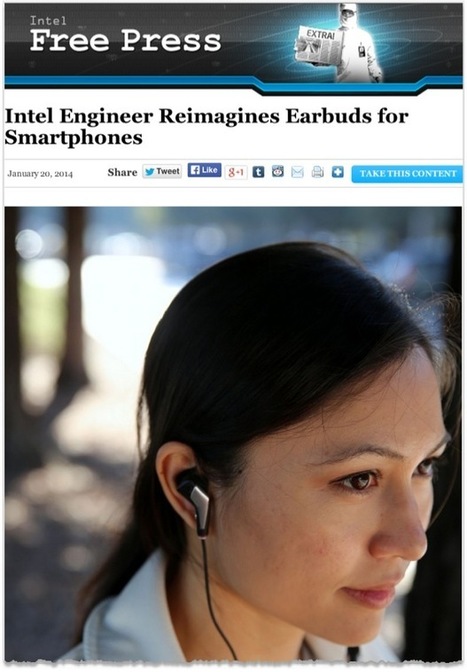
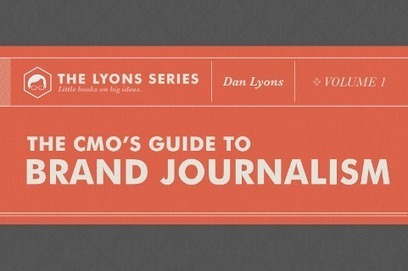
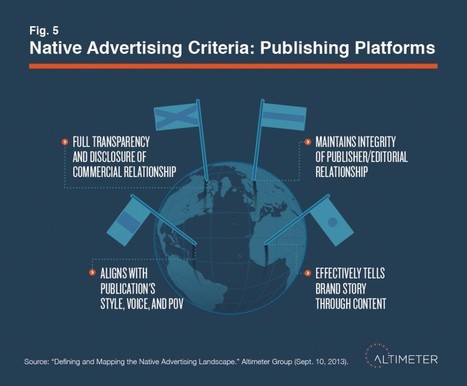















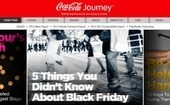


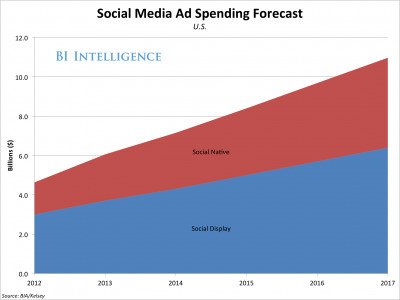
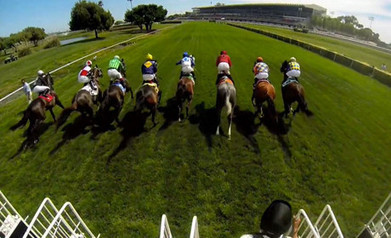








Here's a profile of Van Winkle's "news" and some interesting insight into content marketing and journalism. More recommended reading. 9/10